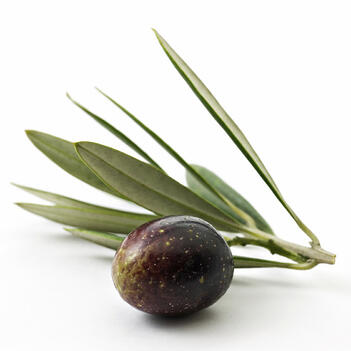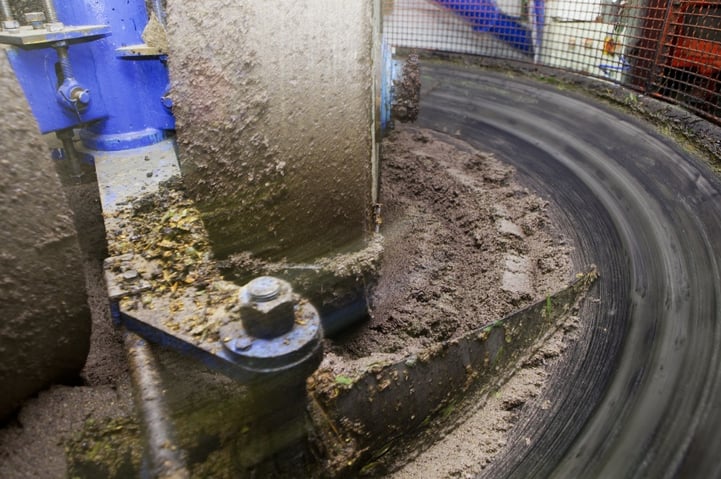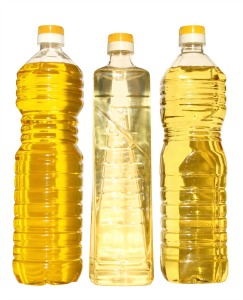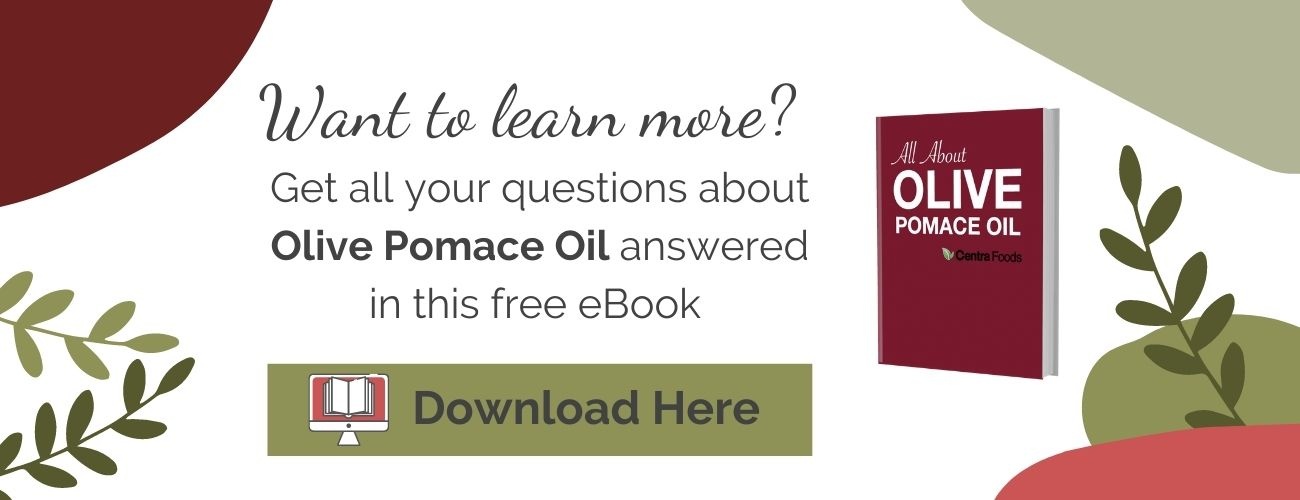Many chefs and home cooks have wondered if Olive Pomace Oil is ideal — or even okay — to cook with.
There are so many thoughts and opinions floating around that I thought I’d weigh out all the pros and cons — specifically for consumers, chefs and moms cooking in their home kitchens.
The Debate
 The debate surrounding Pomace all comes down to how it is produced. It is the only olive oil that is made using solvent extraction, which means that a chemical (typically the solvent hexane) is added the the ground up olives to get the oil out. This solvent is later evaporated in a high heat process, so there shouldn’t be any left in what you are actually eating.
The debate surrounding Pomace all comes down to how it is produced. It is the only olive oil that is made using solvent extraction, which means that a chemical (typically the solvent hexane) is added the the ground up olives to get the oil out. This solvent is later evaporated in a high heat process, so there shouldn’t be any left in what you are actually eating.
Before you place any judgement on Olive Pomace Oil, first check your pantry for any bottles of vegetable oil, canola oil, sunflower oil, soybean oil, corn oil or grapeseed oil — if they don’t say “expeller pressed” on the bottle, these oils are produced using the same exact method of solvent extraction.
I tell you this to put things in perspective — many people are upset by the idea of olive oil being produced in this way, yet continue to use these other solvent expelled oils without knowing how similar they really are.
How Olive Pomace Oil Is Made
Let me start by backing up a step: let’s talk about the exact process of how olive pomace oil is made.
Pomace oil gets it’s name from the “pomace” of the olive — these are the dry remains of olive fruit, skin and pit, after the virgin olive oils have been produced. To make Extra Virgin Olive Oil, they first grind up the olives into a paste, which is passed through a centrifuge to extract the oil by spinning it really fast (think of the spin cycle of your washing machine). From the other end of the centrifuge, out comes the oil from one end, the water from another, and the dry(ish) remains of the olives go into the last bucket. (If you’ve ever made homemade applesauce or apple cider, it’s very similar to the remains left from the apples in that process as well).

Those remains, otherwise known as pomace, are stored as dry pulp but still contain about 8% oil inside of them. From there, there are two realistic options: a) the pomace could be tossed and the oil will be wasted, or b) somehow, the oil must be gotten out of those dry remains. That “somehow” is solvent extraction — typically hexane.
Think of it like this. If you get a sponge wet, you can get most of the water out of the sponge by squeezing it (just like making Extra Virgin Olive Oil). But after squeezing, there’s still water in the sponge. It’s still damp, you know it’s in there! But you can’t get it out, you’ve already squeezed as hard as you can. This is where the solvent comes in. The solvent draws the last of the water out of the damp sponge (aka, the oil out of the pomace).
After the solvent is added and the oil removed from the pomace, the oil moves to the refining process, where it is heated using steam and the solvent evaporates. As the Olive Oil Times puts it, “…the product is heated so the solvent evaporates completely and cleanly without leaving any sort of harmful residue”. Source
The Little Discussed Concern
The undiscussed topic usually surrounds this last part — the heating process. There has been a concern in the past that in unregulated or unqualified mills, that if they heat the pomace oil too much (aka, 300% of what they’re supposed to heat it to), that a harmful residue called polycyclic aromatic hydrocarbons (PAHs) like benzopyrene can be produced.
It is important to keep in mind though that this level of residue is highly regulated by the IOC (International Olive Council), so if you buy oil that is IOC compliant, these levels are checked and must be under their set limits, so you should be in the clear.
Again, this discussion remains the same no matter which type of solvent expelled vegetable oil you use. It’s not something that anyone enjoys talking about, but it’s a reality when you buy any cheaper oil. It’s always the risk of saving money, and choosing lower quality ingredients. This is why Extra Virgin Olive Oil is so expensive and worthwhile.
Is Pomace Ideal For Cooking?
 If you can come to terms with the fact that it’s produced in the same way that the other oils in your pantry are, we can get down to the nitty gritty about the oil.
If you can come to terms with the fact that it’s produced in the same way that the other oils in your pantry are, we can get down to the nitty gritty about the oil.
What is Olive Pomace Oil an ideal fit for, and can you cook with it?
Yes, It Stands Up To Heat
Olive Pomace Oil stands up to heat when you’re baking, cooking and doing hot-fill processes in manufacturing. This means that the heat used in cooking and the general process of making your food won’t damage the oil, including the taste or the smell. In comparison, this is debated with Extra Virgin Olive Oil, because it is a cold-produced oil.
The reason it stands up to heat so well is actually because it’s already been submitted to the high heat refining process, so any flavor or color changes that would come from being heated to high levels are already there. It’s at it’s final color and heat already, so it can stand up to hot temps — up until its smoke point.
The smoke point of olive pomace oil is highly debated. Some say around 400˚F while others say up to 500˚F. For this type of olive oil, it will stand up to heat better than an EVOO would, but I personally think you’ll want to keep the temperature below 425˚F.
Yes, It Won’t Affect The Flavor Of Your Dishes
Because Olive Pomace Oil has been refined, it has a very light color and flavor compared to other olive oils. This means that when you use Pomace in your breads, crackers, dressings, hummus, etc. it won’t impart a lot of flavor.
If you’re looking for a mild olive oil that won’t affect your flavor profile, this is going to be it. If you, however, WANT the taste of olive oil to show up in your foods, I would suggest an Extra Virgin or Virgin Olive Oil.
Yes, It’s Made Up Of Healthier Fats
Olive Pomace Oil is still made 100% from olives, which means that the make up of lipids are still the same as in other olive oils. All olive oil has a high level of monounsaturated fats (the healthy fats) and a low level of saturated and polyunsaturated fats.
Even though this is a solvent produced oil, when lined up to other common solvent produced oils, the type of fat inside is much healthier than the other options.
My Opinion
In your home kitchen, if you can afford to use an Extra Virgin Olive Oil, always do it.
I personally don’t have anything against using Olive Pomace Oil too, especially if you have a pantry filled with solvent-expelled cheaper oils like conventional soybean and canola. I’d opt to use Olive Pomace Oil over those because at least it is made from the healthy olive!
Want to learn more? Check out Olive Pomace Oil: The Ultimate Guide for a deep dive on everything Olive Pomace Oil.
Topics: Olive Pomace Oil













